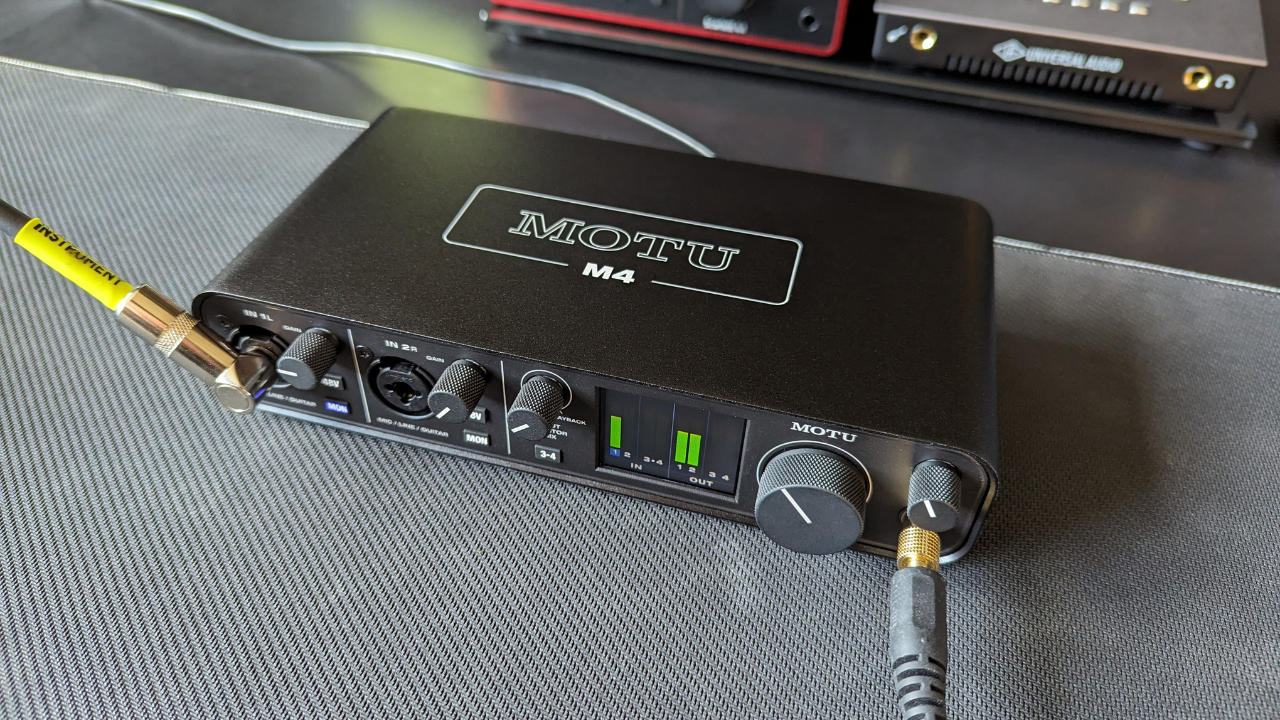
Massachusetts-based audio experts Motu are better known for their professional-grade audio products, more typically used in studios and the AVB space. It seems that like many other pro audio equipment companies, Motu also wants to enter the consumer-level interface market, with an entrant that aims to pack their experience and knowledge into something usable in the home studio.
One of the few home recording-orientated products in their lineup, the Motu M4 has got a lot of competition in the price point it occupies. With Focusrite, Universal Audio, Audient, and SSL - just to name a few - to contend with it certainly has its work cut out if it wants to shine, but it does have a few tricks up its sleeve to help it stand apart from the crowd.
Designed to work in a home studio, for live performance, as a remote recording rig, and for podcasting, this feature-packed 4-in, 4-out audio interface uses the same DACs as Motu’s thousand-dollar products, promising ultra-low latency and best-in-class audio quality, making it a tempting choice for the musician who wants a rig they can use at home then take to a live show.
Motu M4 review: Features
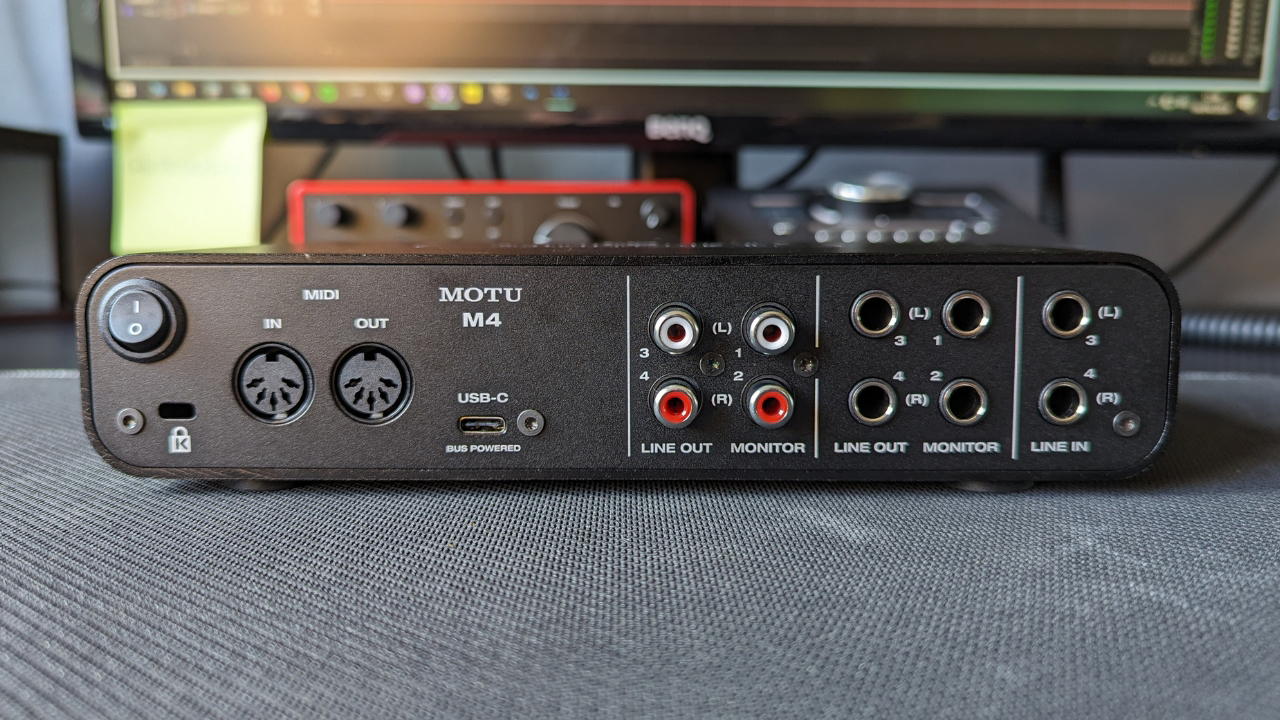
Taking the Motu M4 out of the box, the first thing I’m impressed with is how rugged it feels. It’s got a nice weight to it and is enshrouded in a cold metal casing that feels perfect for throwing it into a backpack and taking it out on the road. The feet on the bottom are great too, and with this thing on a desk or stand you’ll feel confident it isn’t going anywhere even with heavy cables plugged in.
Across the front face, we have two combi mic/line inputs, each with its own gain knob, phantom power switch, and monitor button. A dedicated knob for the input monitor mix allows you to balance between direct and computer audio, individually monitoring channels 1, 2, or 3-4 at the press of a button. Next along you’ve got the impressive LED screen, a large output knob, and a dedicated headphone out with its own control.

The reverse panel is similarly full of connectivity, with MIDI in/outs, a USB-C output, four unbalanced RCA analog outs, four balanced outputs, and two 1/4-inch line inputs. It gives you a huge amount of options and certainly makes it one of the most connection-friendly audio interfaces I’ve ever come across at this level. There’s also a dedicated power button which is another rarity, and useful to have on a bus-powered interface.
It boasts some impressive figures as well, supporting sample rates from 44.1kHz to 192kHz, offering -129 dB EIN on the mic inputs, and a whopping 120 dB dynamic range on the balanced outs. Those dynamic outs are all DC coupled too, which will be music to the ears of any synthesizer aficionados using a DAW to control parameters.
Motu M4 review: Installation
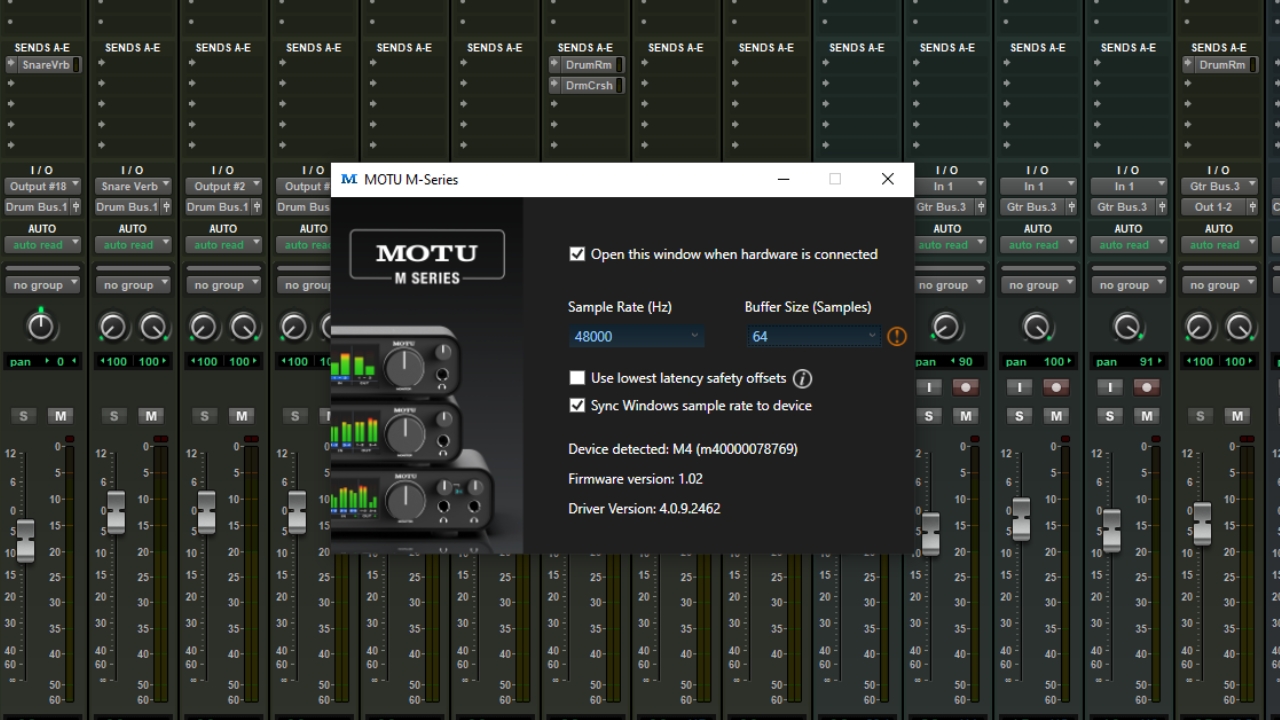
I began by installing the dedicated driver on my Windows machine via the official Motu website, which required a reboot of the computer before Pro Tools and Ableton would pick it up. I did then have to reboot the device itself, as the monitoring wasn’t being picked up on the LCD via the interface, despite everything working within my DAW. With that done I was ready to arm tracks and begin recording, making it one of the simpler audio interfaces I've ever had to set up.
The dedicated Motu M4 app is a simple affair but does a great job. I love the tick box that allows for automatic syncing of the sample rate to the device, useful if you’re working on various projects that encompass 44.1 or 48 kHz project files. You can manually change the sample rate of course, and a second drop-down allows you to select the buffer size, more on which later.
Motu M4 review: Usability
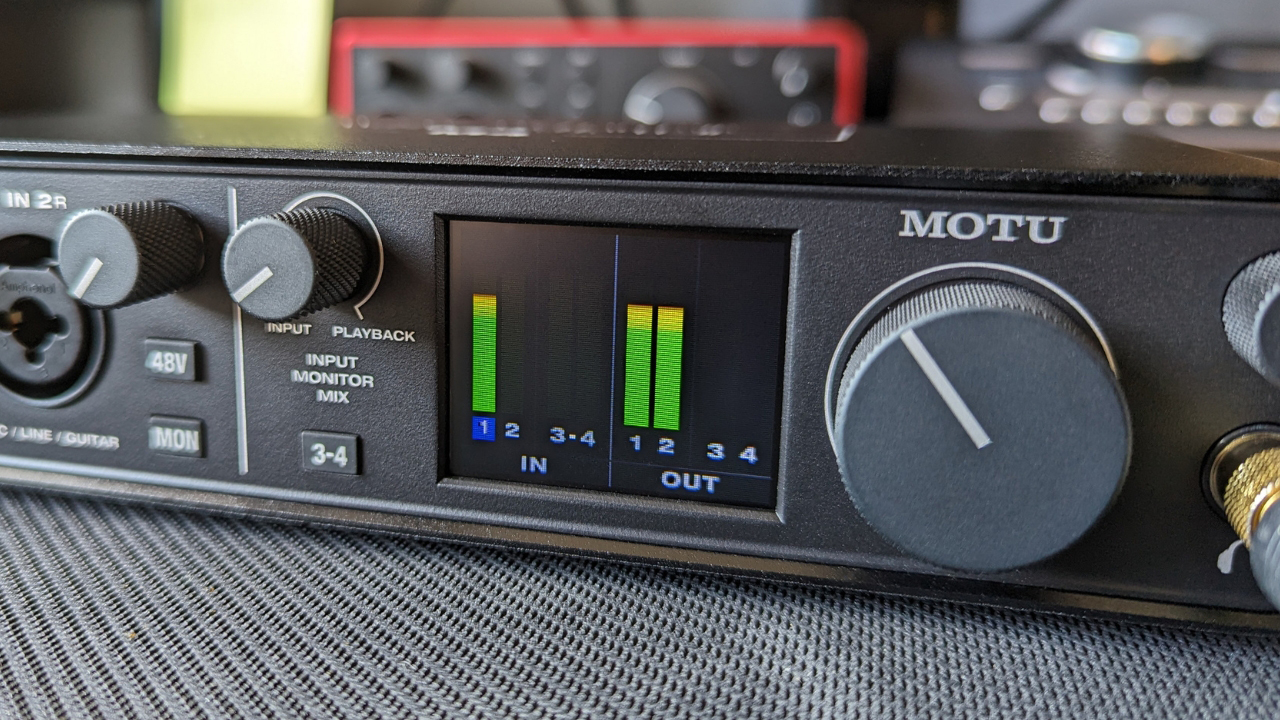
Testing the M4 with Pro Tools, I began recording direct audio using a recently purchased electric oud. All the ins and outs lined up perfectly in Pro Tools with no extraneous routing of I/O, giving me an excellent step to spring forward and create with a minimum of fuss. I also did a quick test in Ableton and it performed similarly admirably, having me up and running nice and quickly.
I found it ultra-responsive at 44.1 kHz with 32 samples, the interface performing admirably with no audible clicks and pops despite multiple instances of Helix Native and various UA plugins running. At 48 kHz I could get the buffer down to 64, which is nigh-on indistinguishable when it comes to perceptible delay times. Bear in mind this was on a 10-year-old i7 machine, so you’ll likely be able to get those buffer figures much lower on a silicon-equipped laptop or modern PC.
The screen is bright and clear, really useful for getting gain staging correct and having used the M4 for a while, I found it to be one of its most impressive features. I’ll use different guitars with different pickups for recording, so the ability to quickly check the input gain without having to click off to a dedicated app made a world of difference to my workflow and left me wondering why more audio interfaces aimed at the home recording musician don’t offer this kind of functionality.
Motu M4 review: Sound
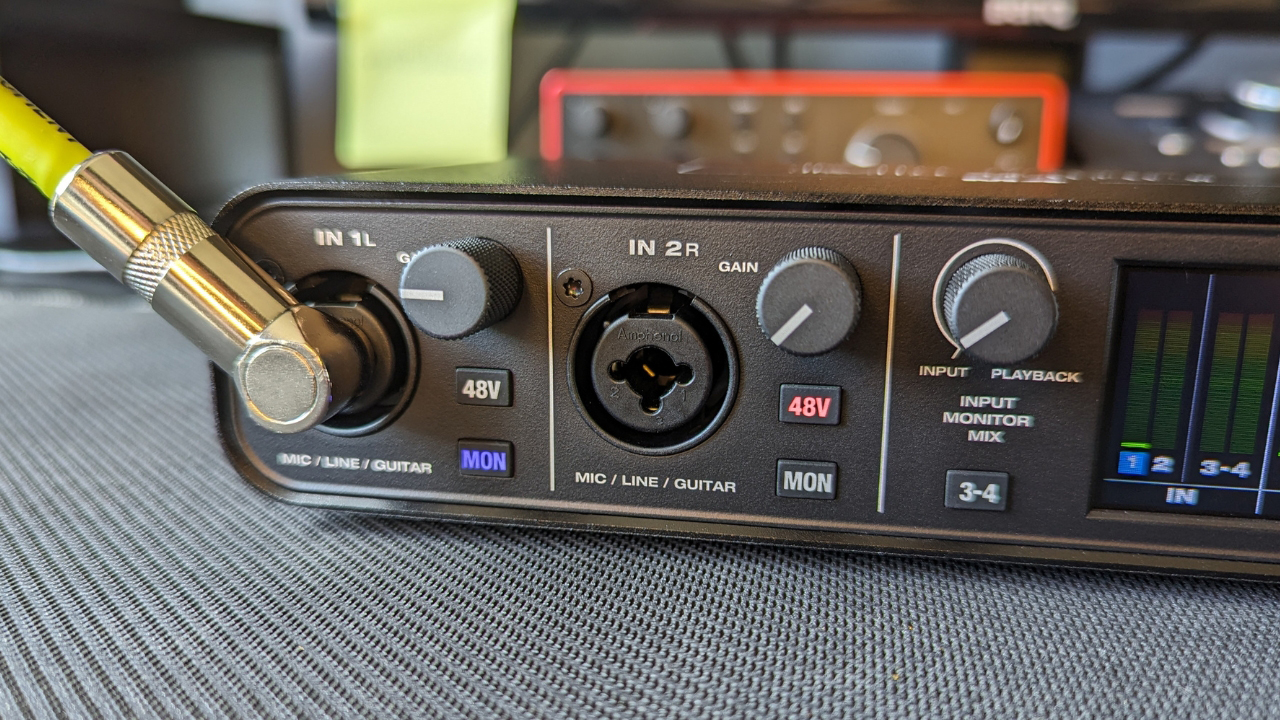
In terms of sound, as I always say there’s not much difference between audio interfaces at this level. Generally speaking what’s important is the sound going in, rather than the effect of the interface’s preamps on it. That said, the preamps here are very impressive, delivering pristine audio quality from a variety of instruments whether that was a DI bass guitar or when plugging my HX Stomp in direct.
There’s a lot of headroom available too, so recording drums or a dimed guitar cab through a condenser microphone is a breeze for the M4. The noise levels are nice and low too, so you’ll be able to pull a great sound with a breathy vocal or a smaller acoustic guitar in a room. Overall I found the quality of the sound to be first-class, and it delivered in a variety of tasks for me.
Motu M4 review: Verdict
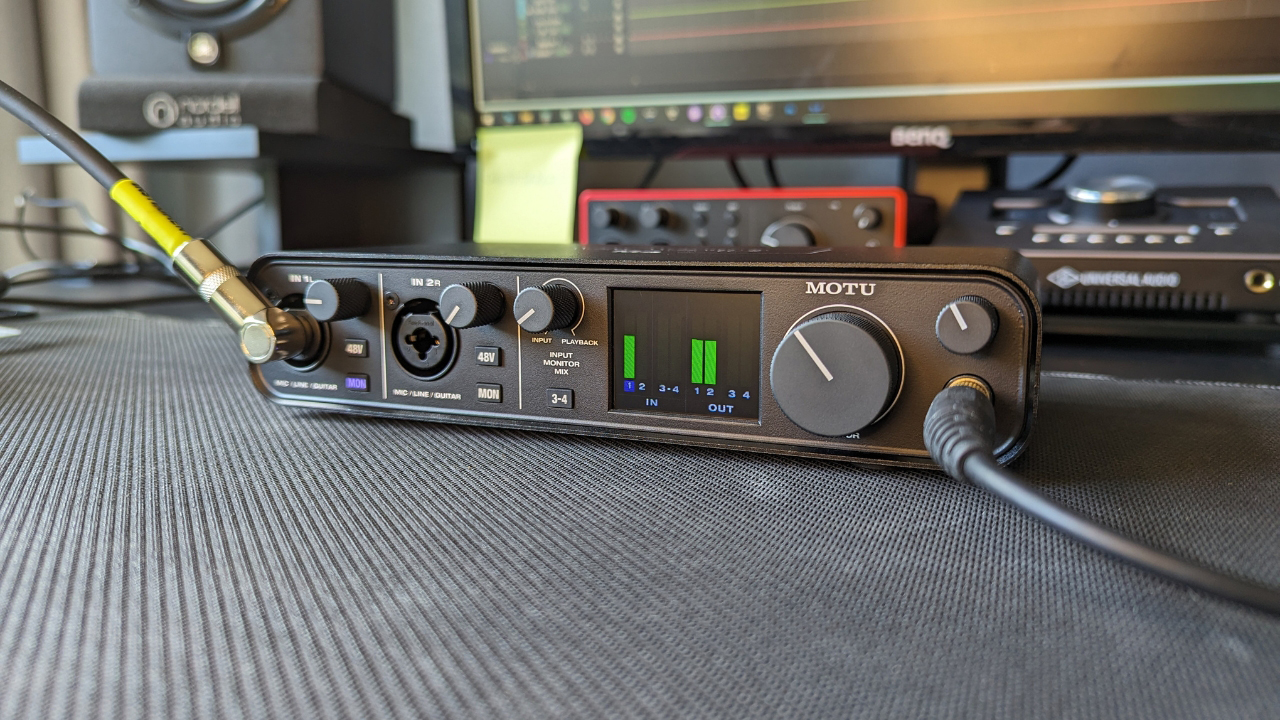
If you’re looking for a complete audio interface that can handle a variety of duties, the Motu M4 is a fantastic choice. Packed with connectivity and features it’ll do just as well at the heart of a home recording studio as it will as part of a live rig running Ableton alongside a bunch of drum machines and synthesizers.
The incredibly low latency figures will make it a great choice for those with less-than-stellar machines to work on, and that LCD screen is simply sumptuous, giving you a clear insight into just how hot that input signal is. For the money, this is undoubtedly one of the most full-featured audio interfaces we’ve come across, and certainly able to compete with bigger brands like Focusrite, SSL, Universal Audio, and co.
Motu M4 review: Specs
- Connectivity: USB 2.0
- Simultaneous I/O: 4 x 4
- Number of Preamps: 2 x mic, 2 x instrument
- Phantom Power: Yes
- A/D Resolution: 48kHz
- Analog Inputs: 2 x XLR-1/4" TRS (mic/line/Hi-Z), 2 x 1/4" (line)
- Analog Outputs: 2 x 1/4" TRS (DC coupled, monitor), 2 x 1/4" TRS (DC coupled, line), 1 x Dual RCA Stereo (monitor), 1 x Dual RCA Stereo (line)
- Headphones: 1 x 1/4"
- USB: 1 x Type C
- Bus Powered: Yes
- Contact: Motu







